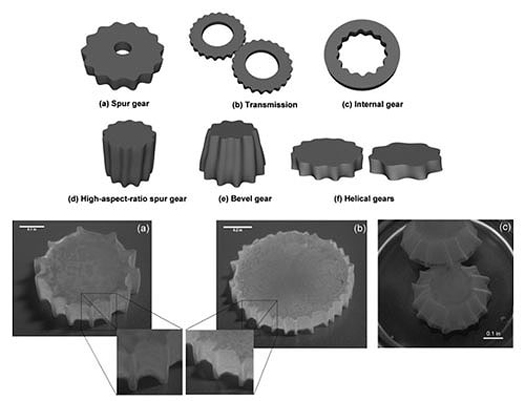

For years, creating the gears and sprockets needed to make a microscopic robot has required the expensive and time-consuming process of silicon etching. Carving out each individual piece with a laser has made producing more than a couple of pieces prohibitively difficult and costly.
A team at Columbia University now seems to have found a way around that problem. By laying a thin sheet of metal over a special layer of polymer, the team has created nanogears that assemble themselves, opening the possibility of much faster, cheaper, widespread production.
To make the gears, a thin copper sheet is laid over a heat-expanded polymer. When the polymer cools, it shrinks faster than the metal, which causes the metal to bend. When the metal bends, it creates regularly spaced teeth in the polymer, effectively making a microscopic gear. Stiffer metal that’s harder to bend creates a gear with fewer, larger teeth, while a more supple metal creates gears with smaller, more numerous teeth.
The team has already made a number of different types of gears, all at the six-to-25 millimeter range, and are now ready to shrink the process down further, to create gears smaller than a micrometer.
However, even more than shrinking down the size of the gears, creating non-linear teeth looms as the real challenge, with the big payoff. If the Columbia team can figure out how to manipulate the polymer so that it cools preferentially in one or another direction, they can create the complicated gears needed to produce devices like a drive train. And once you can create self-assembling drive trains on the cheap, hordes of self-replicating nanobots are not far down the road.
[via New Scientist]






